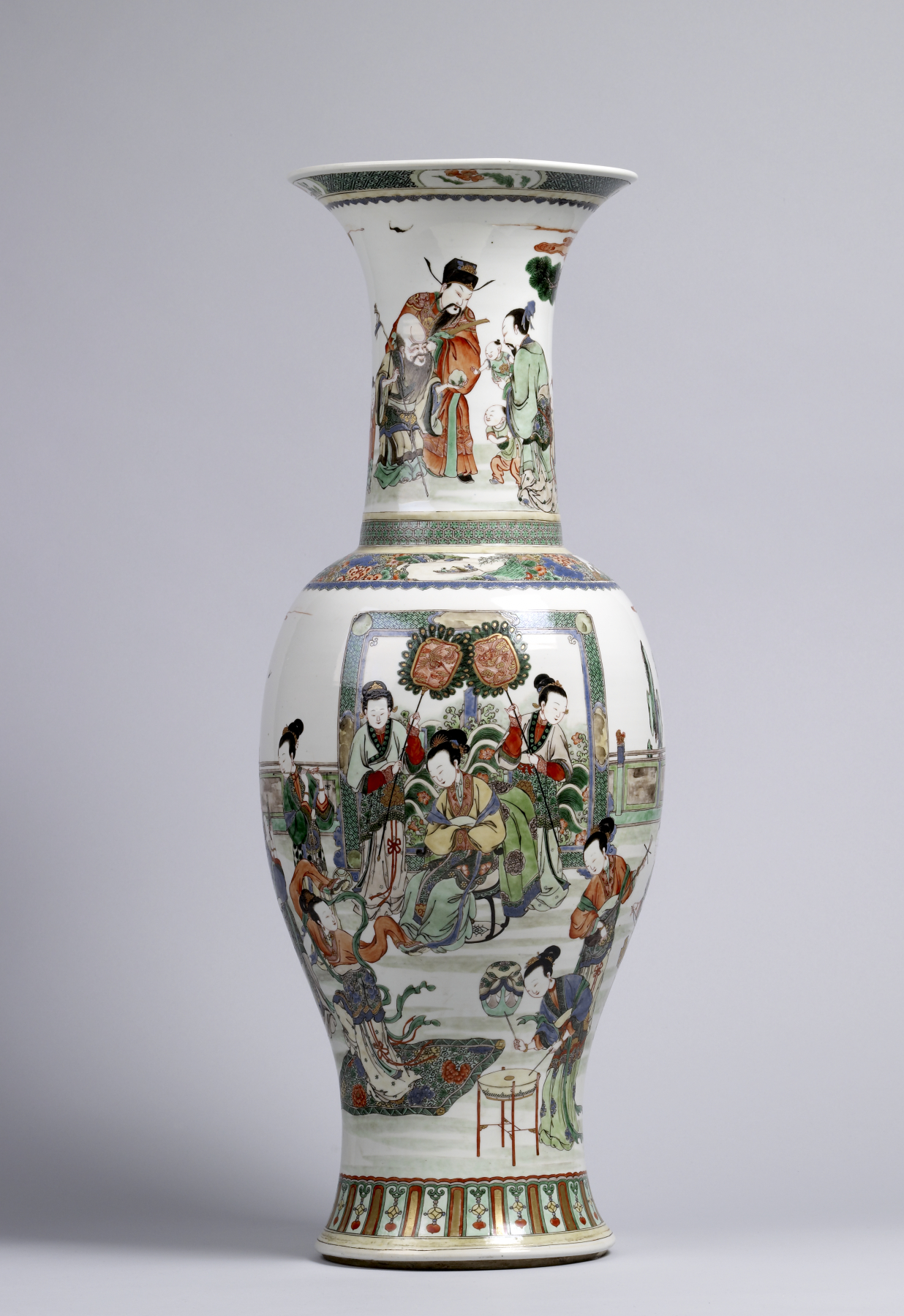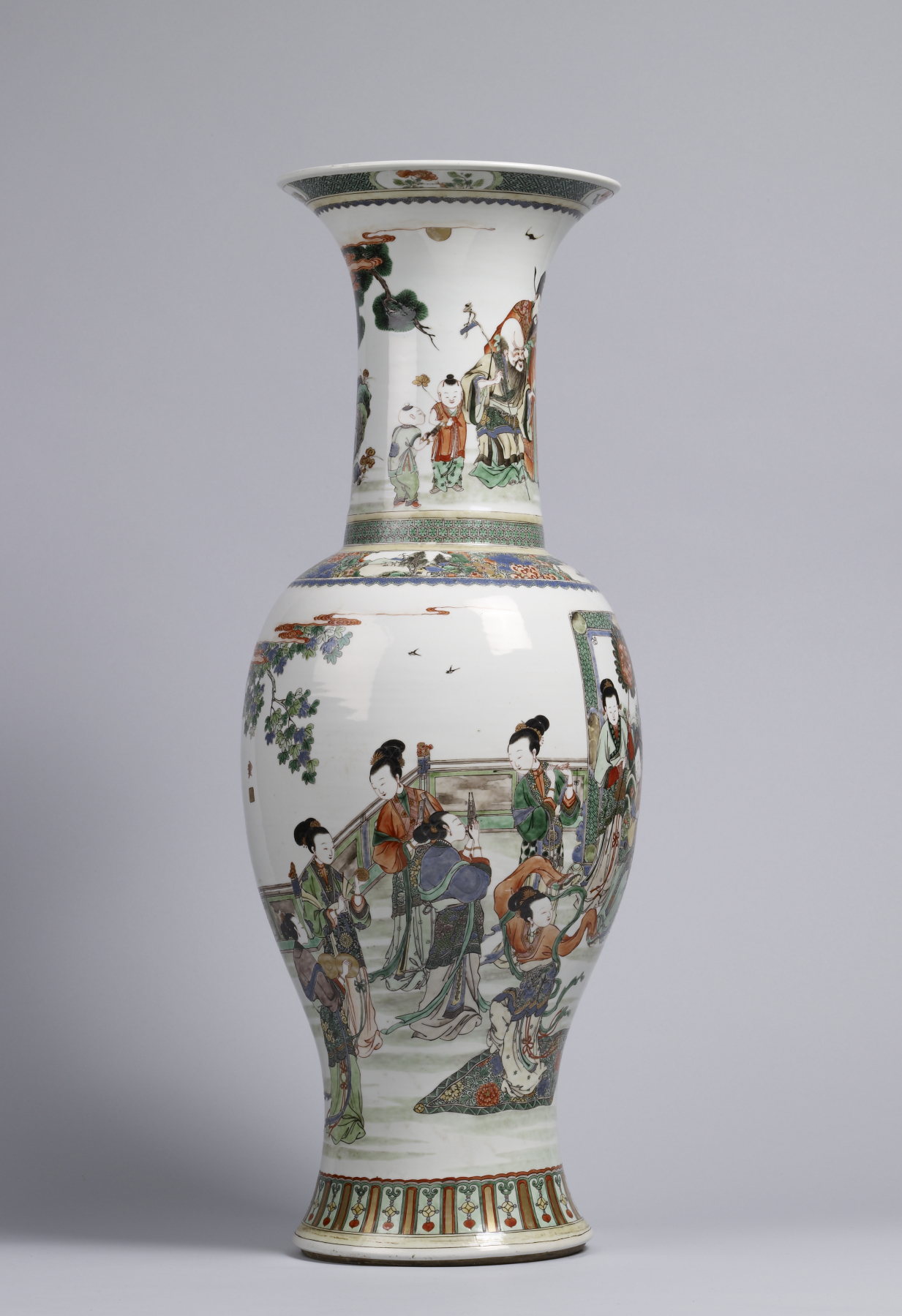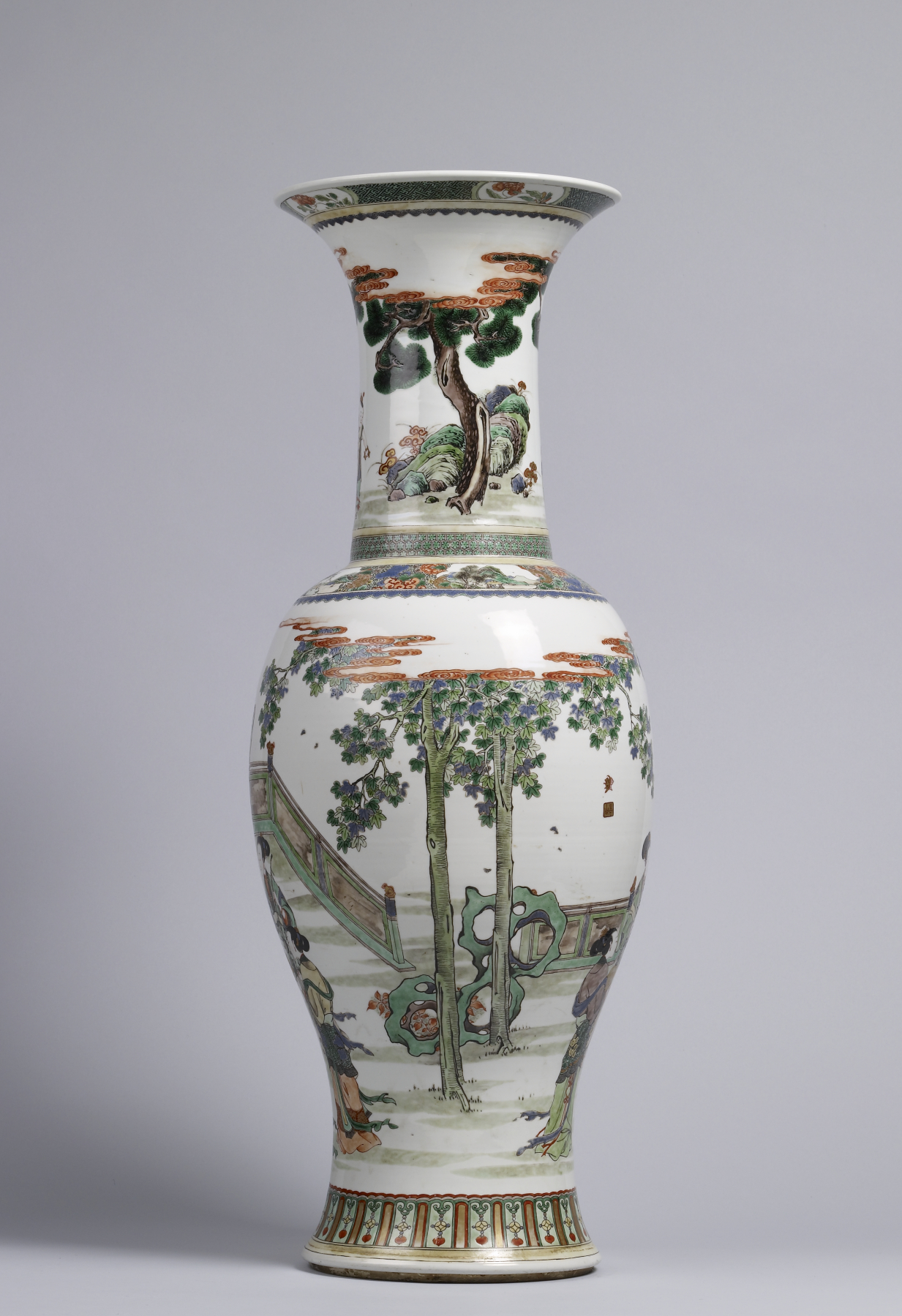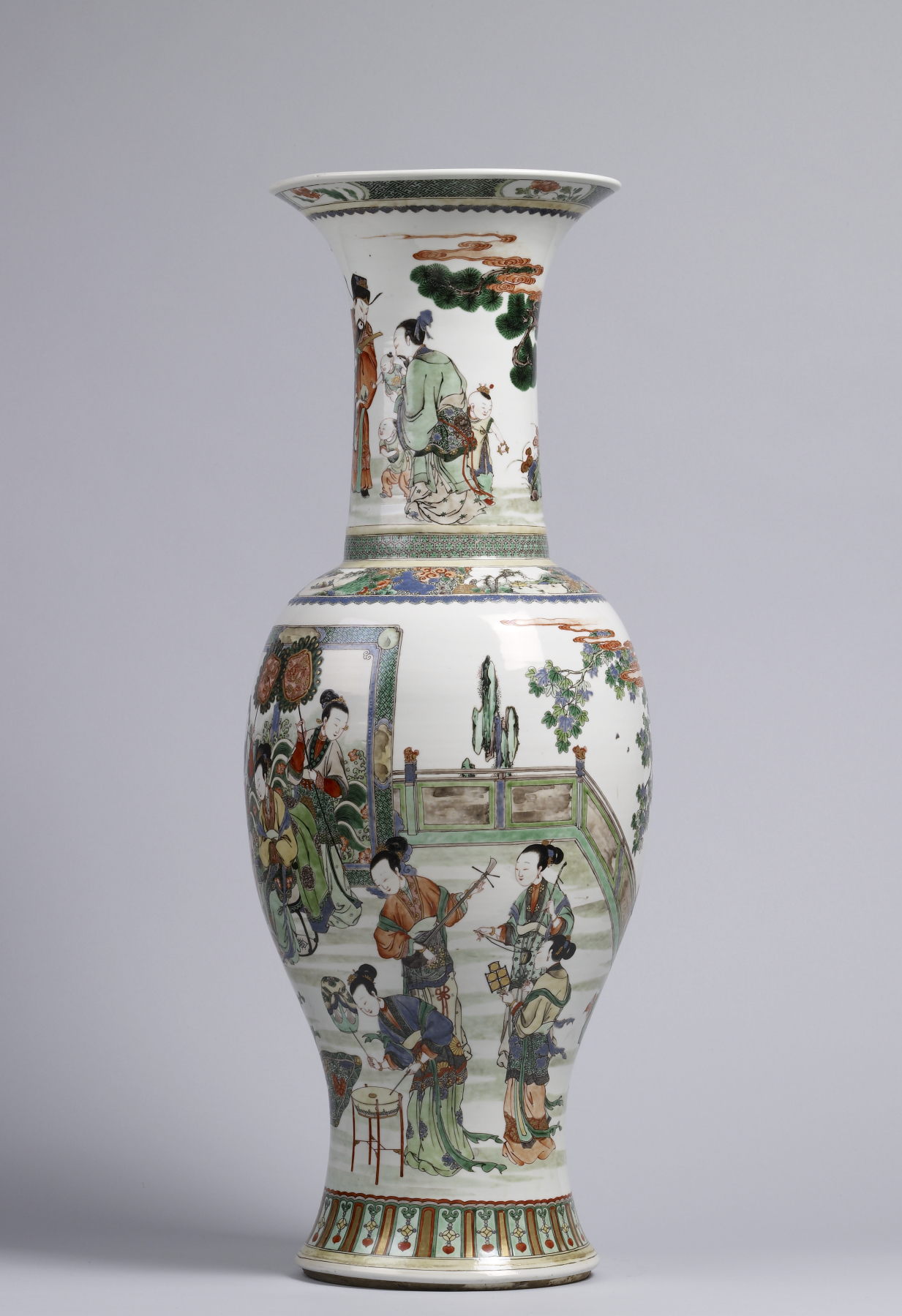Vase with Garden Scene and Three Star Gods
(China )
The color palette of this vase developed from the wu cai (“five colors”) palette that began during the previous Ming dynasty (1368–1644). Kangxi’s wu cai features green and black as dominant enamel colors. Vivid black is used to outline foliage, figures, objects, and the architectural structure. Green enamels were added on top of the black enamel lines not only to deepen the color but also to seal the black enamel onto the porcelain surface.
The main subject on the body of this vase is a court interior in which musicians play and a dancing woman performs for the seated figure at the center. Two attendants hold large ceremonial fans above her head. Above the court scene, a separate subject is displayed on the vase's neck. Here, three Star gods, or folk deities, are gathered in conversation. They are Shou, Fu, and Lu, representing the good fortunes of Longevity, Happiness, and High Rank, respectively.
Provenance
Provenance (from the French provenir, 'to come from/forth') is the chronology of the ownership, custody, or location of a historical object. Learn more about provenance at the Walters.
William T. Walters, Baltimore [date and mode of acquisition unknown]; Henry Walters, Baltimore, 1894, by inheritance; Walters Art Museum, 1931, by bequest.
Exhibitions
| 2009-2010 | Imagining China: The View from England, 1550-1700. Folger Shakespeare Library, Washington. |
| 1980-1981 | Masterpieces of Chinese Porcelain. The Walters Art Gallery, Baltimore. |
Geographies
China (Place of Origin)
Measurements
H: 29 1/2 × Diam: 9 5/8 in. (75 × 24.5 cm)
Credit Line
Acquired by William T. Walters, before 1894
Accession Number
In libraries, galleries, museums, and archives, an accession number is a unique identifier assigned to each object in the collection.
In libraries, galleries, museums, and archives, an accession number is a unique identifier assigned to each object in the collection.
49.2349








